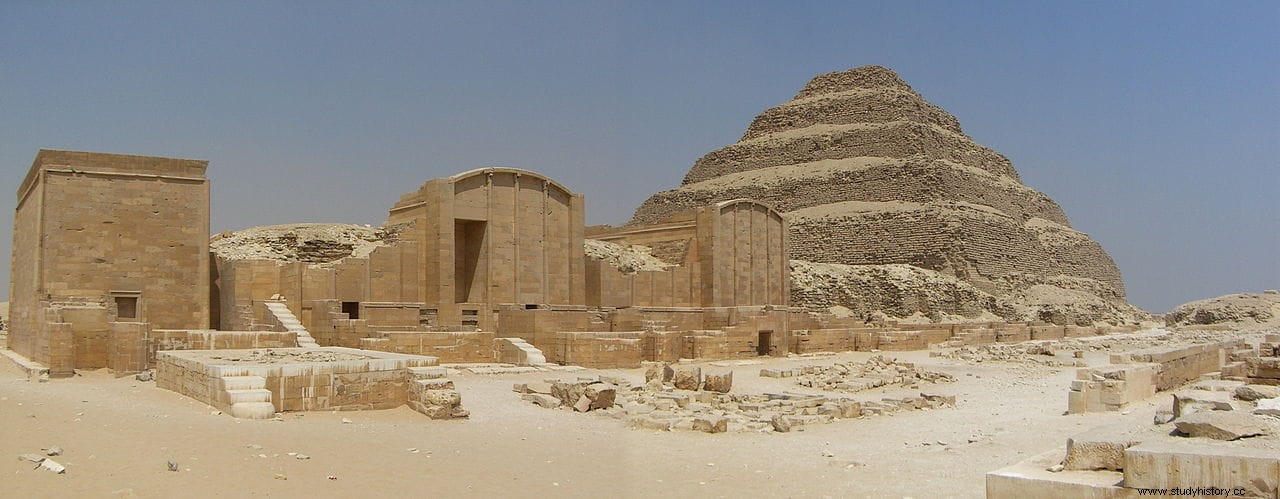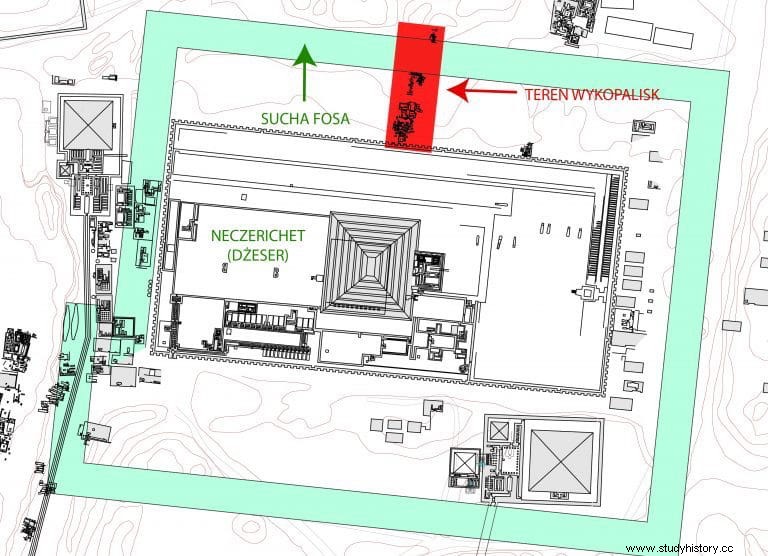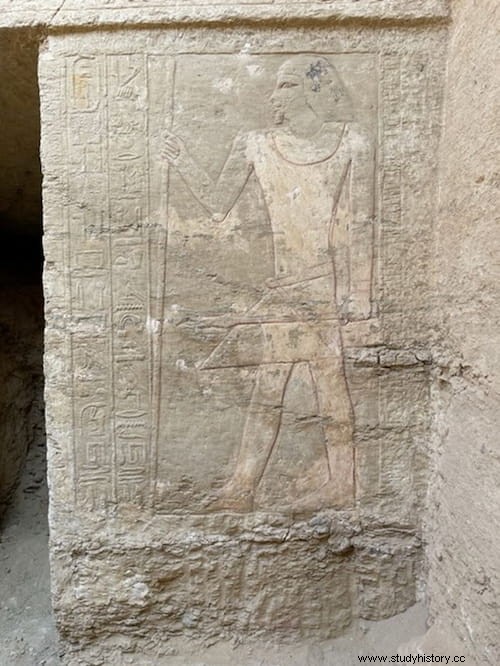The tomb of the official responsible for the secret documents of the royal chancery during the reign of Userkara, the second pharaoh of the 6th dynasty, was discovered by Polish archaeologists in Saqqara, next to the oldest pyramid in the world. It dates back to 4,300 years ago.
So far, researchers have reached the chamber, the above-ground part of the tomb, where the reliefs can be seen. Egyptologists have managed to read from the hieroglyphics carved into its façade that the tomb belongs to a man named Mehcheczi.
So far we have only discovered the facade of the sanctuary, the interior is awaiting the next excavation campaign. Probably thanks to his good position, Mehcheczi was able to hire an efficient team of craftsmen, since his chapel is decorated with reliefs of exceptional beauty. . – the head of research at the Polish-Egyptian archaeological mission in Saqqara, Professor Kamil O. Kuraszkiewicz from the Faculty of Oriental Studies at the University of Warsaw, stressed in an interview. The works were carried out within the framework of the mission of the Center for Mediterranean Archeology of the University of Warsaw.

The tomb is located on the eastern shore of the so-called Dry Moat. It was a gigantic ditch with a rectangular floor plan (about 750 by 600 meters). It surrounded the oldest pyramid complex in Egypt (the Step Pyramid) built 4,700 years ago by Djoser, including the great wall and adjoining chapels.
The Dry Moat is today almost completely covered by debris and sand carried by the desert, and is completely invisible from the ground, but its outline can be seen in some aerial and satellite photographs.
The successive seasons of excavations have provided researchers with always new information about the site. It has turned out that the Dry Moat was also used several hundred years after Ziser's reign. One of the proofs of this is the latest discovery made in October last year in the form of an entrance to the tomb of Mehcheczi.

The inscription on the facade of the newly discovered chapel shows that, among other things, he was admitted to the secrets of the pharaoh's archive. How should this title be interpreted? It is possible to suppose that what is questioned with this title is not so much the category of the documents, but the access to the scene of their creation. It is possible that he had a right to see the documents that were submitted to the royal chancery before they were made public. But this is only an assumption, because we have little information for the time we are talking about said Professor Kuraszkiewicz.
Mehcheczi was also inspector of the royal treasury and priest of the tomb cult of King Teti. Although examination of the interior of the chapel and of the tomb, probably excavated beneath it, has yet to begin, archaeologists have gained a great deal of information just by reading the foundation façade of the tomb. On it there are inscriptions and reliefs that represent the owner of the tomb.
As Professor Kuraszkiewicz added, unfortunately the colors have not been preserved. But the relief itself betrays an exceptionally skillful hand - graceful lines, subtle modeling - by an artist at least as good as the best of the Merefnebef tomb relief makers .

Everything indicates that Mehcheczi lived at the time of Merefnebef, who was vizier in the court of Pharaoh Userkara. He was the highest dignitary of Egypt, whose role is compared to that of the current prime minister. Merefnebef's tomb is located nearby. It was discovered in 1997 by a team led by Professor Karol Mysliwiec. Merefnebef's tomb is one of the few in Saqqara with exquisitely preserved polychromy.
Professor Kuraszkiewicz described that at the entrance to the newly discovered Mehcheczi chapel, the decoration was not finished. Only sketches in black ink on lime plaster are visible. From them, subsequent craftsmen made the bas-relief. They represent sacrificial animals:cows, oryxes and ibexes.
The scientist pointed out that the rock on which the decorations were made is very fragile and heavily eroded, so the entire substrate, including the painted plaster, required immediate intervention by conservators. This task was led by the head of the conservation team, Zbigniew Godziejewski of the National Museum in Warsaw, who died this year.
In the immediate vicinity of this tomb are chambers from the Third Dynasty (ie Djoser's time) and other tombs from the Sixth Dynasty, thus contemporary to Mehcheczi's. The new find is therefore not a complete surprise to us. What was a surprise was the quality of the reliefs and the name of the owner .
Professor Kuraszkiewicz has been doing research in the Dry Pit area for many years. Scholars have suggested that it formed a boundary between the sacred, that is, the royal tomb, and the profane, that is, everything that lay beyond. According to others, it was a quarry from which the material for the construction of the pyramid was extracted, and in addition it did not have any important function. Several years ago, Kuraszkiewicz introduced a new concept. According to him, it could have served as a three-dimensional model of the path to the afterlife of the deceased pharaoh.
